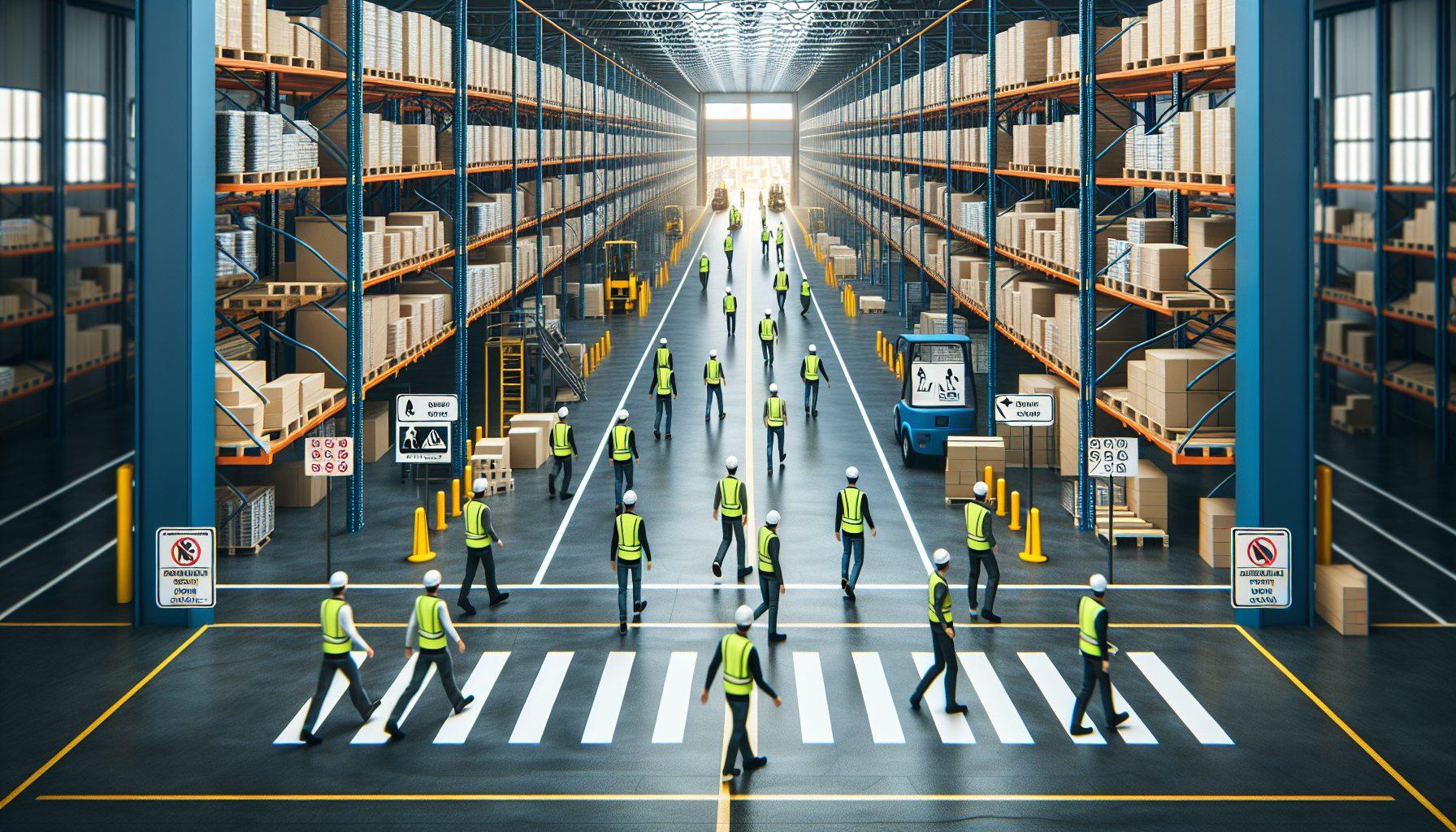In warehouses, it is crucial to prioritize the safety of both workers and pedestrians. With the presence of heavy machinery such as forklifts, ensuring safe walkways is of utmost importance. By implementing proper safety measures, warehouse owners and operators can significantly reduce the risk of accidents and create a secure environment for everyone.
The Importance of Safe Walkways
Safe walkways play a vital role in warehouse operations for numerous reasons:
- Preventing Accidents: Properly designated walkways separate pedestrians from forklift traffic, reducing the likelihood of collisions and accidents. This helps prevent injuries to workers and damage to goods in the warehouse.
- Promoting Efficiency: Well-defined and easily accessible walkways allow pedestrians to navigate the warehouse efficiently, reducing their travel time and enabling them to focus on their tasks without unnecessary disruption.
- Enhancing Productivity: When workers feel safe and confident in their surroundings, their productivity tends to increase. By providing safe walkways, employers can create a productive work environment that fosters employee satisfaction and engagement.
- Compliance with Regulations: Many countries have specific safety regulations that warehouses must adhere to. Implementing safe walkways helps ensure compliance with these regulations, avoiding penalties and legal issues.
Now let’s explore some effective strategies for creating safe walkways in warehouses:
1. Clearly Marked Pathways
A simple yet effective way to ensure safe walkways is by clearly marking the pathways for pedestrians. This can be done using bright, bold lines and markings on the floor, indicating the designated walkways. This helps pedestrians identify their route and stay within the safe zones.
Additionally, it is essential to make sure these markings are well-maintained and clearly visible at all times. Regular inspections should be conducted to ensure any faded or damaged markings are promptly retouched or replaced.
2. Physical Barriers
In certain areas of the warehouse, it may be necessary to physically separate pedestrian walkways from forklift traffic. This can be achieved by installing barriers such as guardrails or safety gates. These barriers help to create a clear boundary, preventing pedestrians from accidentally stepping into areas where forklifts are operating.
It is crucial to select robust and durable barriers that can withstand any potential impact. Regular inspections and maintenance of these barriers are also essential to ensure they remain effective in providing the necessary protection.
3. Adequate Lighting
Proper lighting is indispensable for creating safe walkways in a warehouse. Inadequate lighting can increase the risk of accidents as pedestrians may struggle to see potential hazards or obstacles in their path.
Ensure all walkways are well-lit, especially in areas with low natural lighting. Regularly check and replace any faulty or dim lights to maintain optimal visibility.
4. Signage and Warning Systems
Effective signage plays a critical role in alerting pedestrians to potential dangers and guiding them along the correct paths. Install clear and easily understandable signs that indicate pedestrian-only zones, forklift traffic areas, and any other specific instructions necessary to ensure safety.
Furthermore, implementing warning systems like alarms or flashing lights can further enhance pedestrian safety. These systems can be activated when forklifts approach pedestrian areas, notifying both pedestrians and operators of the potential hazard.
5. Training and Education
No safety measure can be truly effective without proper training and education. It is essential to provide appropriate training to all employees, including warehouse workers and forklift operators, on the importance of safe walkways and how to navigate them correctly.
Emphasize the significance of following designated pathways, looking out for potential hazards, and maintaining situational awareness. Regular refresher courses and safety meetings can help reinforce this crucial aspect of warehouse safety.
Investing in Modern Solutions
While the strategies mentioned above are vital for creating safe walkways, technology can further enhance safety in warehouse environments. Innovative solutions, such as forklift pedestrian detection systems, can significantly minimize the risk of accidents.
These systems utilize advanced sensors and cameras to detect pedestrians in the vicinity of forklifts and alert the operators to their presence. By implementing such technologies, warehouse owners can provide an added layer of safety for pedestrians and greatly reduce the chance of accidents.
If you are interested in these cutting-edge solutions, HCO Innovations offers a Forklift Pedestrian Detection System that can greatly enhance safety in your warehouse. Learn more about it here.
Conclusion
Creatin safe walkways in a warehouse environment is paramount to ensure the well-being of both workers and pedestrians. By implementing strategies such as clearly marked pathways, physical barriers, proper lighting, signage and warning systems, and comprehensive training, warehouse operators can significantly reduce the risk of accidents and create a secure working environment.
Moreover, investing in modern solutions such as forklift pedestrian detection systems can further enhance safety levels. By combining these strategies with innovative technology, warehouses can prioritize safety and promote efficiency, ultimately leading to a successful and secure operation.

